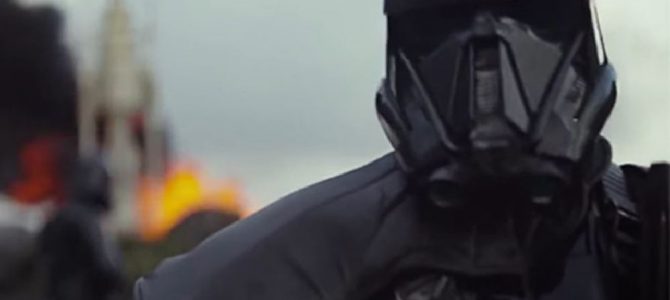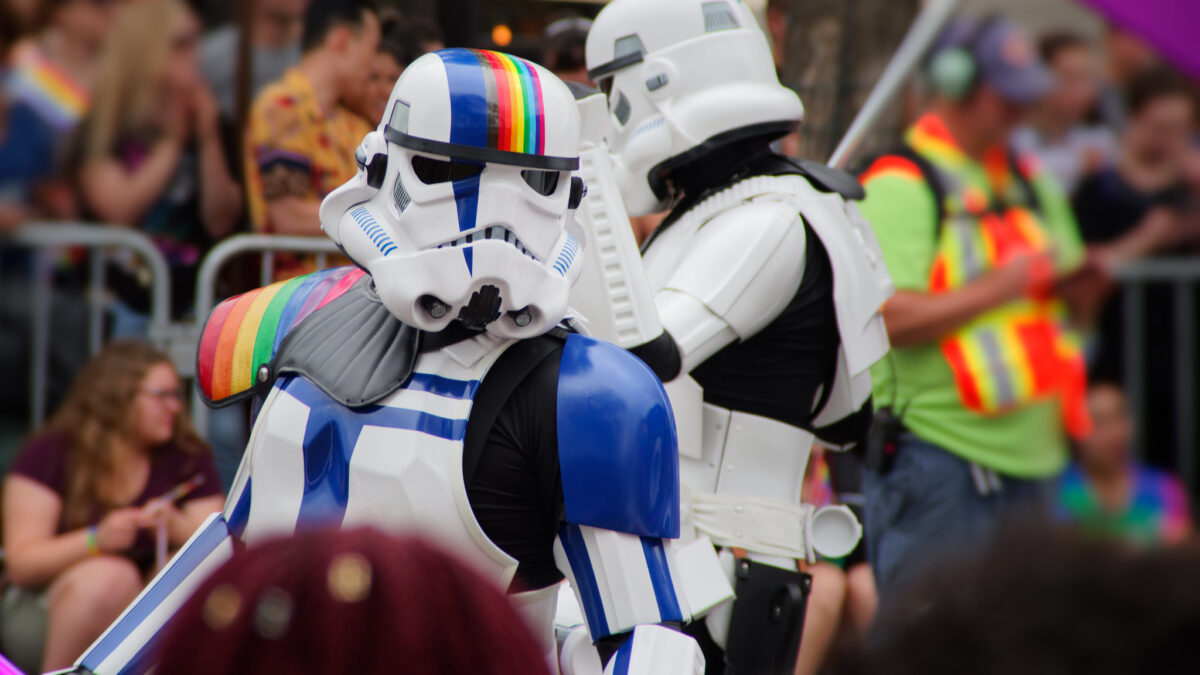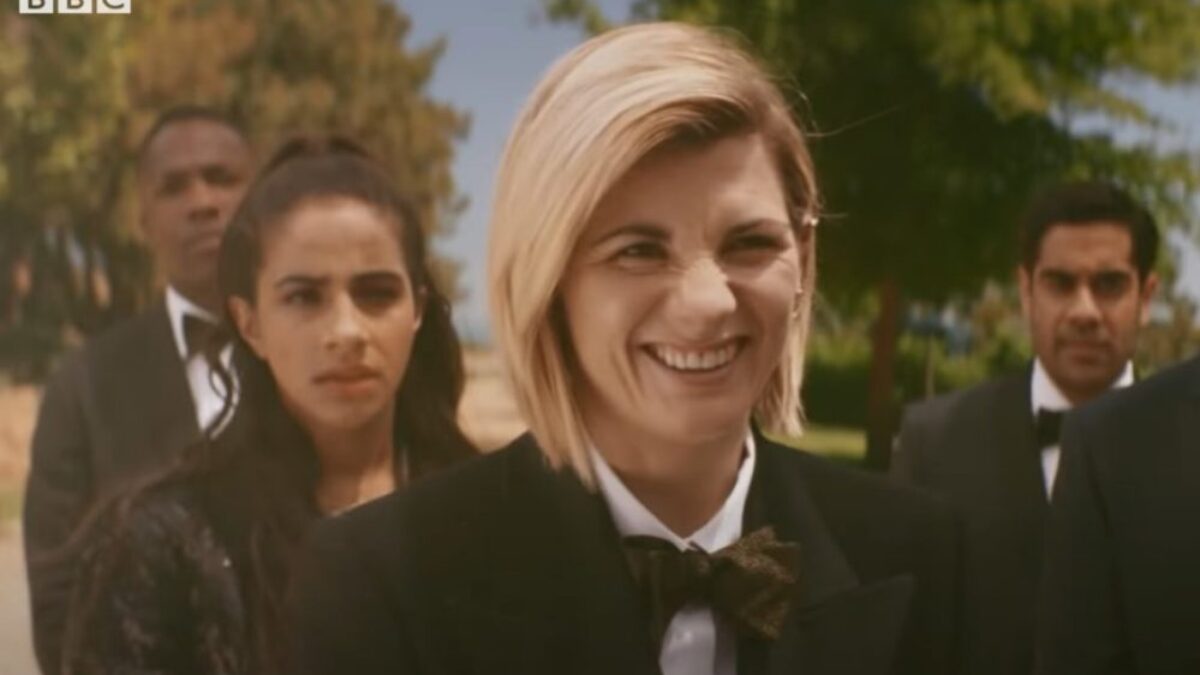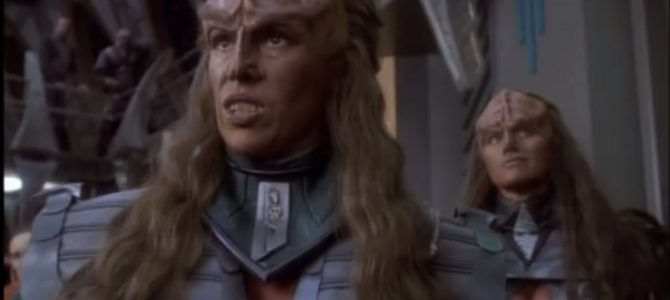
I finally got around to seeing the new Star Wars spinoff movie Rogue One. Yes, I have kids, and yes they’re into Star Wars. But they’re too young for us to be dragging them off to see every Star Wars film the moment it comes out, and after mom and dad pre-screened it, we decided they’re definitely too young—both under 10—to see this one. Which turns out to be kind of significant.
It’s not just the level of violence, although that’s a factor. Perhaps this creeped up on me gradually, but I just now noticed that every Star Wars movie since Revenge of the Sith has been rated PG-13, as opposed to the PG ratings of previous installments. They’ve definitely made the films more intense for younger viewers, which strikes me as a pretty unfriendly thing to do to parents of young families. Then again, Hollywood has been actively repelling us for a long time.
What I’ve really noticed is a darkening in the mood and atmosphere, the overall “sense of life,” of the Star Wars franchise. This comes out very clearly in Rogue One because—and there’s a big spoiler here, though it’s probably late enough I don’t have to worry about it—everybody dies in the end. Everybody. The daring raid to obtain the secret plans for the Death Star turns out to be a suicide mission.
You could argue that this is baked into the original premise and that it lends the film a kind of gritty realism. But that’s the problem. Star Wars was never about gritty realism.
The original film—which Millennials now apparently call A New Hope but which those of us over 40 stubbornly insist on just calling Star Wars—arrived in 1977 in the midst of a Hollywood highbrow culture steeped in precisely that kind of “realism.” The trend in Hollywood in the early 1970s was all washed-out colors and incomprehensible or inconclusive story lines, centered around morally ambiguous anti-heroes. Think The Godfather (for the anti-hero), 2001: A Space Odyssey (for the highbrow incomprehensibility), Midnight Cowboy (for the inconclusive plot and morally agnostic attitude), and so on. In other words, pretty much the total opposite of “Star Wars.”
And the film was originally reviled by the highbrow critics for precisely that reason. They looked down their noses at “the mythic and simple world of the good guys vs. the bad guys,” and predicted that it “will do very nicely for those lucky enough to be children or unlucky enough never to have grown up.” Even today, one science fiction writer laments that “Star Wars sent the [science fiction] genre back to an essentially juvenile form.”
The highbrow reviewers all seem to like this latest installment, which might tell you a little something.
Not many people realize that the great conservative filmmakers of our age are George Lucas and Steven Spielberg. Forget about their personal political views, which naturally conform to the left-leaning Hollywood consensus. Think purely in esthetic terms. Lucas and Spielberg collaborated on the two great movie franchises that helped shape the culture of the 1980s: Star Wars and Indiana Jones.
It’s not just that these films were nostalgic tributes to an old-fashioned style of story-telling, the Westerns and movie serials of the pre-Counterculture era. It’s that the stories were told in bright, primary colors; they centered around clear-cut battles between good and evil; they were anchored by a charmingly irreverent, classic American individualist type—played, in both cases, by Harrison Ford (who was the real star of the Star Wars films, a fact that The Force Awakens finally figured out); they both gave a central role to religion, to the point where every Indiana Jones film ends with a literal deus ex machina, which is what makes them specifically conservative as opposed to libertarian; and last but not least, they had happy endings in which the heroes lived and triumphed and even rode off into the sunset.
Yes, in the first Star Wars trilogy, people died, even major characters. And of course Han Solo shot Greedo, but the scumbag deserved it. Yet the main characters lived and had their happy ending. After all, they were the good guys, and they deserved it.
But we don’t get happy endings any more. Nor do we get morally unambiguous figures. The moment when I knew we were really in different territory in Rogue One was when the main male lead, Diego Luna’s Cassian, explains why his recruits have volunteered for the suicide mission: they’ve all done terrible things for the cause, as spies and assassins and the like, so they need to know that the cause for which they committed those crimes was not in vain and that the revolution will succeed. If you know much about the history of the twentieth century, you know why this is the absolute worst reason to support a revolution—though it lends some confirmation to certain theories about why so many people had such nice things to say about Fidel Castro.
That’s the other thing that’s disappointingly different about Rogue One. There’s a lot of talk in this film about “the cause,” including a scene in which the two lead characters have a tiff about who is more down with the struggle. This probably helps Hollywood leftists feel more at home, because lefties pull this sort of thing on each other all the time. But in the original Star Wars films, there was little discussion of or interest in “the cause.”
It was there in the background, of course, but we only had to know enough to know who were the good guys and who were the bad guys, and we could already pretty much tell that from the shapes of their helmets. The original films were more personal, about a desire for adventure, about loyalty to friends, or about a quest for enlightenment and redemption. Today, by contrast, the characters are generally less interesting, memorable, and appealing as individuals (at least the human ones—Rogue One gives us another good droid). They are there mostly just to give their lives for the cause.
Today’s highbrow culture is a lot like the one Star Wars shattered on impact in 1977. Check out today’s “prestige TV,” which is where most of the highbrow entertainment has gone. It’s all anti-heroes and moral ambiguity and no happy endings and yet another knock-off of “The Sopranos.” It’s the early 1970s all over again.
The Hollywood highbrow empire has struck back, and it shouldn’t be surprising that it has finally taken over at least part of the Star Wars franchise as its revenge.
Follow Robert on Twitter.









